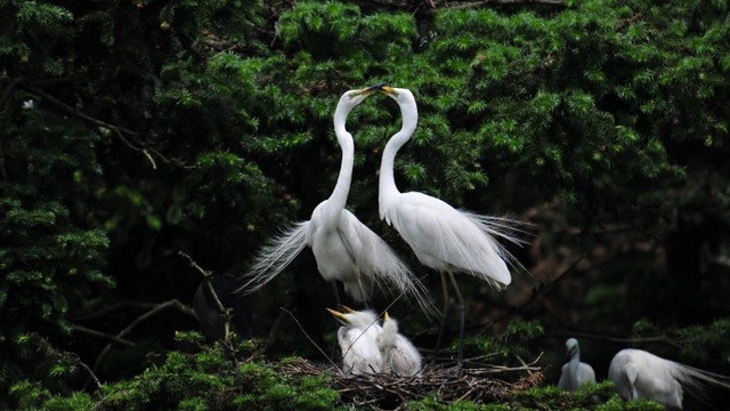On 2 June, CGN announced some results from the six-month project undertaken with Shenzhen Marine Public Welfare Organisation and divers from local group local group Dive Love Dapeng. Daya Bay and Shenzhen are in the southern province of Guangdong, on the South China Sea.
Bai Xiaozhe is the leader of Dive Love Dapeng and also the director of Shenzhen Ocean Museum. He said that a coral survey of the Dapeng Peninsula in the 1980s showed that coral cover was over 70% at that time. The environmental effects of Shenzhen's rapid growth since then reduced coral cover to 30%, but he said the recent dives found that sea coral survival conditions were very good.
Bai's team of divers identified seven species of stone coral, including two with national protection.
.jpg.aspx)
On land, protected animals in the vicinity of the nuclear plant include eight that are nationally protected, including chameleon, two kinds of egret, Pallas's fish eagle and collared owlets. The area is home to pythons, nightingales and to fireflies, which have been declining elsewhere in China.
All this makes Daya Bay, "The world's most beautiful power plant," according to Mr Liu Dako, a popular science blogger on Weibo, who posted that it was incredible that a place so close to a huge city could have "mountains and seas, fresh water, coastal wetlands and all kinds of ecology."
Zuo Yuxuan, deputy general manager of Daya Bay Nuclear Management Company said the firm has monitored the environment around the plant since before construction began in the 1980s. His teams maintain six environmental monitoring sites on land and five seawater monitoring buoys.
.jpg.aspx)
A sea slug on the seafloor near Daya Bay (Image: CGN)
CGN said that compared to burning coal, the emissions avoided by the two reactors at Daya Bay and the four at Ling Ao, also on Dapeng Peninsula, were equivalent to planting forest across 160 million hectares – around eight times the area of Shenzhen.
.jpg.aspx)
White dolphins near Yangjiang (Image: CGN)
CGN is also proud that white dolphins, which indicate excellent water quality, can be seen at the Yangjiang nuclear power plant, and the company took time to note its work to protect the desert orchids near the Husab uranium mine in Namibia. At the Fujian Ningde nuclear power plant thousands of hectares of white tea garden was preserved when the plant was built and incorporated into the overall landscape. The plant now sells its own line of organic tea.





_82983.jpg)
_34792.jpg)
_16403_79272.jpg)


_76087_55556.jpg)



